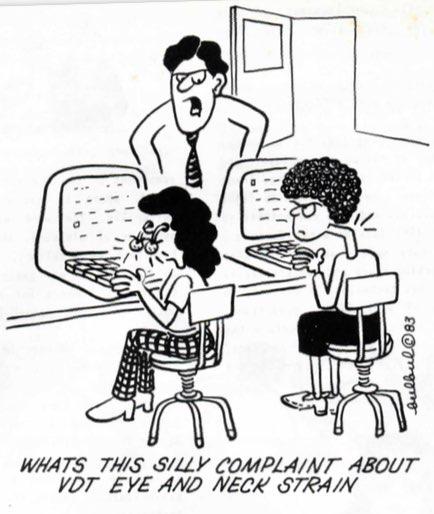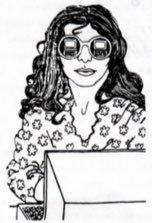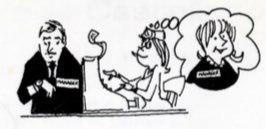Feminist Strategies

with the increasing numbers of "runaway shops" seeking shelter from organized labor and health and safety regulations in Third World countries, international networks are clearly essential for feminist action. One element of feminist strategy is the need for efforts in building international awareness at local and national levels. Another is the need for women in industrialized countries to chartactions with the conditions and needs of women in Third World countries in mind, gearing strategies toward solidarity. Along these lines, we here at the conference need to be aware of our class privilege - e.g. higher educational background and easier access to resources.
In discussing international strategies, trade unions, on the surface, seem the obvious organizations through which strategies could be generalized across the world, but women's experience has been extremely negative. Although there are some situations (such as the textile industry) where this would be the best way to work, we feel strongly that women need their own autonomous organizations for action. Ways of autonomous working could be through existing women's movement channels - it is important to build on and facilitate the existing feminist organizations and networks - or through community organizations.
In any case, the basis of feminist strategies should be initiatives of women stemming from our needs and aspirations. The example of SEWA* could provide a model for feminist strategies. Three important elements of SEWA are:
— visibility: organizing women into a visible group is a major condition for attracting attention from policy makers,
struggle: to in still consciousness of new responsibility and the realization that "togetherness is power",
— development: in developing greater skills women can determine our own destiny more effectively.
We went on to discuss one thing specific to women: that we all work, whether or not we are employed, and if we do have jobs, ur burden is a double one. Trade unions were created as men's organizations to fight for better working conditions and have never tried to deal with the rest of life outside work. Women are concerned with the private sphere as well as what happens during their working hours and our strategies must be based on this. New technology is not only an attack on the sphere of work (jobs, conditions, health , etc.), it also threaten store structure the private sphere (introduction of home computers, breaking down of women's link with their children! education).

Present- day new technology is designed and controlled in acentralised, concentrated, elitist , and male-oriented manner - atrend which i s becoming ever stronger. The need for appropriate and decentralized technology is brushed aside. NT reinforces and enhances the hierarchical and male-dominated society. However, isn't there potential to decentralize the running of our society with NT? To counter isolation, to end segregation of jobs between women and men? This of course necessitates appropriate and genuine education of women in order to use NT for ourselves.
It was suggested that we should re-examine the concept of work. Studies done in Africa (where most of the work i s done by women) have shown that there is a different concept of work there. The Western work ethic was developed during the Industrial Revolution and is now being exported , as the cultural component of the new technology, to therest of the world, where it has caused some severe problems culturally. The work ethic defines work as the opposite of pleasure, the opposite of leisure. (In high-tech male culture, the ludic element re-enters in the form of war games, which i s an excellent way to prepare bombers for action in Vietnam, but has little to do with "play" in any real sense.)

Another issue brought up was the capital- intensive character of NT. Is it possible for feminists to gain control and acquire NT when men control our society's capital? Would this question lead to alienation between feminists in the rich countries and feminists in the poor countries?
It can be said that NT has always been with us historically. Basically we should look at new technology as a new technological development displacing the old technology. However, it must be recognized that NT (like OT) is neither neutral nor in animate. It is controlled by certain people and their interests. The goal for feminists then is to see NT developed in terms of how it serves the kind of world we want to live in.
Recomendations for Action
a) Education: social and political to "raise consciousness" about the effects and uses of NT. Technical education too is vital so we can understand NT and thus use i t to our own ends. An example of demystification was given through the description of the women and computing group in England, who have bought a microcomputer and put it at the service of the many feminist groups in London. In this way computers are being used to women's advantage. The second thing they have done is to teach women how to use computers, concentrating on operating in an informal environment and on demystifying the process: explaining clearly those technical terms which really have to be used, and trying to eliminate all therest of the jargon which is usually used by men to mystify the subject and humiliate those who aren't in on the secret . Simple manuals can be written (the best example is a Lady bird book written for children), but mostly they make no attempt to be clear , and are imported from the country of origin of the computers, so that in Denmark, for example, there are no manuals in Danish, only in German or American. The effect of this jargon is clearly shown by the new US term "techno peasants", for those who don't understand.
b) Organizing: in the workplace, homes, churches, or fields. At the community and international levels.
c) Quick Information Exchange Network: for support and exchange. Existing feminist organizations should be utilized and built upon.
d) Appropriate Research: we need to act to counter or stop research which is detrimental to women. At the same time, more research should be carried out by feminists to develop technology appropriate for women.
•SEWA is described at length elsewhere in this publication
SEWA
The Following is excerpted froa an interview, conducted by Jane Cottinghaa of ISIS, with Lalita Krishnaswaai of SENA (Opposite Victoria Gardens,
Ahaedabad 380001, Gujarat, INDIA) in June 1983, when she attended the Moaen and New Technology Conference.

Q: What exactly is SENA?
A: SEWA means Self-Employed Women's Association. In India languages i t means "service". It aim is to further the socio-economic uplift of women in self-employed illiterate categories. We have 18,000 members.
Q: Hhat do you aean by "socio-econoaic uplift"?
A: We have three categories of women. First are home-based workers like incense stick workers,
cigarette -workers, hand-block workers. Second, small traders and vendors, and third, old garment vendors. These can group still other services like hand-cart workers, construction workers, and others who offer
In organising these workers we come across various problems. Our most important goal is to make these women visible. We have to struggle with policy makers, institutions, and the like. Struggling to organise-the women themselves organise. For instance, vegetable and fruit vendors used to sit in the market place. These women were harrassed by the police. They had money or goods taken from them. They were beaten up. SEWA helped to organise them. They started lobbying the municipal government to give these women the right to sit there and sell their goods. Now they are allowed to sit there with a SEWA badge. The authorities know they have to deal with SEWA. The State government has set up a labour board to help these women. The Gujarat government has recognised that women's organisations should be given preference when buying goods for distribution in prisons, f o r example. Prices are fixed by a Committee consisting of government officials and SEWA. SEWA is also given precedence in distributing cane baskets and brooms to government offices
Q: You also aake yourselves visible through publications?
A: Yes. We have collected information and published it in "We, the self-employed". We have a newspaper every fort night in Gujarati. Host members are illiterate so one person will read it to others. It includes articles on, for instance, Muslim women, banking, sewing, resources. Do you know about the bank? All these women face common problems of lack of capital, no access to credit facilities, no equipment. No one would listen to them. This was the most important thing that came up in our organising . A woman would come and borrow money, and pay 10% p e r day to the money lender. So we decided to organise a bank. SEWA is recognised as an independent trade union. The men's union chucked us out because women were becoming too independent. The Textile Labour Association (TLA) chucked us out. The National Labour Organisation too. Information was sent out all over the world that SEWA should not be recognised as a trade union. There were 700,000 rupees in the bank and the TLA withdrew their money. Credit facilities are most important. So women got together and said, "we want our own bank". The women were illiterate, and people said, "how can you have a board of directors who are illiterate?" So overnight women learnt to write their names. We now have 500,000 rupees. Women take loans for equipment. Women have a photo taken with the number of their account. They present this when they go into the bank. This means that fathers and sons and husbands cannot withdraw the money. Often the women did not have any place to keep money safely. So the bank encouraged the habit of saving.
Q: Did the husbands try to sabotage this?
A: Oh yes. But SEWA was too strong . One woman's husband used to beat her up. The community would say she was morally degraded but she continued t o come to SEWA. So now the bank gives her loans. The bank is run entirely by women. We have 95% recovery from loans. About 20 women work in the bank. It is also a mobile bank - one woman goes to areas to collect installments.
Then we have training: up-grading skills. We work on research and development of equipment, occupational health hazards, etc. We also have a social security scheme which provides (1) maternity benefit for agricultural workers. From 6 months of pregnancy onwards, women get medical treatment. The child is innoculated, and the mother receives 100 rupees for one week off work, and one tinof ghee. (2) Widowhood assistance. A woman cannot leave her home for 10 days after the death of her husband, so SEWA provides 100 rupees to compensate her for loss of wages. (3) Death assistance which is also 100 rupees, given to the family to perform funeralrites. To become a member of SEWA you pay 5 rupees per year. The training programme deals with how to run a cooperative, how to keep accounts, and up-grading skills. For instance, block printers: the women were just printing cloth and giving it back to the merchants. The training scheme converted the workers into entrepreneurs, dealing with anything from mixing the dyes to selling the products which were made. This by-passes the middle-men.
Q: the middle-men must have been angry?
A: Yes. For example, we have been organising patch quilt workers, who were making quilts from textile waste. One middle man paid 60 paise per quilt. But when women organised , they claimed higher pay. At t he last moment the trader backed out, so SEWA got the material directly from the mills, so we had to confront traders and get aretail outlet. Another example is the cane and bamboo workers. Women were members of a cooperative, but the raw-material marketeers tried to cheat them by buying their share and selling the extra on the black market. SEWA is now getting the material directly from the source. We are helping them with outlets too. We hold exhibitions to sell goods - we're hosting a national
exhibition in Ahmedebad in October of this year.
Q: Have you sought support from outside?
No. We sought support from the trade unions because
we wanted to form ourselves into a union. We are
getting help from development agencies like Oxfam,
and then the government of India and the State
government.
Q: How lany people are on the executive comittee of SEMA?
A: About 30 organisers and 25 trade representatives who are working. The organisers are people who go into the field. We have four divisions: the bank, trade union activities, rural economic development, and training. Of course these areas overlap. For instance, we have been training weavers in design, but they also get help in management and marketing support.
Q: Do other groups know about you?
A: Twelve to thirteen women's groups from different arts of India came for a workshop and there are now 12 or 13 SEWAs. Each group functions independently.
Q: How do you deal with caste conflicts?
A: Oh, terrible problems. I had (and frequently have) two training groups at the same time - Muslim and Maharasthra. They would not drink or eat from the same pots. So I started to do this and when they saw me do it, gradually they started to do the same. The caste differences are lost when people come to SEWA. There is sometimes a discussion on these issues. I mostly work with Muslim women and yet I am a Hindu. Now they trust me.

